Top Rankings
New Albany-Plain Local School District ranks among the top 20% of public school district in Ohio for:
Category
Attribute
Overall Rank
Highest overall rank (Top 5%)
Math Proficiency
Highest math proficiency (Top 5%)
Reading/Language Arts Proficiency
Highest reading/language arts proficiency (Top 5%)
Science Proficiency
Highest science proficiency (Top 10%)
Graduation Rate
Highest graduation rate (Top 5%)
Diversity
Most diverse schools (Top 1%)
Community Size
Largest student body (number of students) (Top 1%)
For the 2025 school year, there is 1 public preschool serving 522 students in New Albany-Plain Local School District.
Public Preschools in New Albany-Plain Local School District have a diversity score of 0.56, which is less than the Ohio public preschool average of 0.58.
Minority enrollment is 36% of the student body (majority Black and Asian), which is less than the Ohio public preschool average of 39% (majority Black).
Overview
This School District
This State (OH)
# Schools
5 Schools
839 Schools
# Students
5,065 Students
334,112 Students
# Teachers
293 Teachers
18,897 Teachers
Student : Teacher Ratio
17:1
17:1
District Rank
New Albany-Plain Local School District, which is ranked within the top 5% of all 918 school districts in Ohio (based off of combined math and reading proficiency testing data) for the 2021-2022 school year.
The school district's graduation rate of 96% has decreased from 98% over five school years.
Overall District Rank
#37 out of 929 school districts
(Top 5%)
(Top 5%)
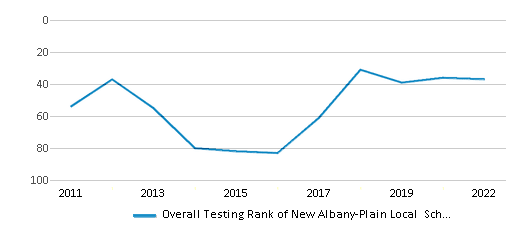
Math Test Scores (% Proficient)
83%
52%
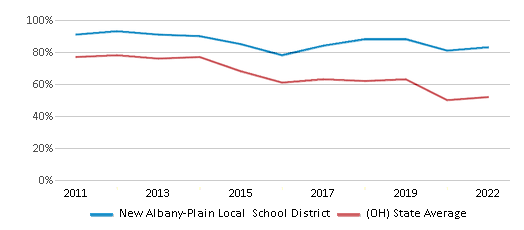
Reading/Language Arts Test Scores (% Proficient)
84%
60%

Science Test Scores (% Proficient)
85%
63%
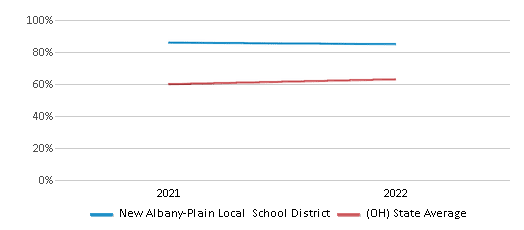
Graduation Rate
96%
86%
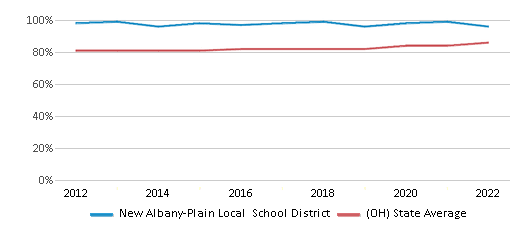
Students by Ethnicity:
Diversity Score
0.58
0.58
# American Indian Students
13 Students
462 Students
% American Indian Students
n/a
n/a
# Asian Students
538 Students
8,061 Students
% Asian Students
11%
3%
# Hispanic Students
326 Students
30,384 Students
% Hispanic Students
6%
9%
# Black Students
633 Students
67,190 Students
% Black Students
13%
20%
# White Students
3,178 Students
204,949 Students
% White Students
63%
61%
# Hawaiian Students
2 Students
329 Students
% Hawaiian Students
n/a
n/a
# Two or more races Students
375 Students
22,737 Students
% of Two or more races Students
7%
7%
Students by Grade:
# Students in PK Grade:
229
45,802
# Students in K Grade:
293
55,948
# Students in 1st Grade:
319
51,388
# Students in 2nd Grade:
344
49,073
# Students in 3rd Grade:
362
40,515
# Students in 4th Grade:
368
38,905
# Students in 5th Grade:
393
30,860
# Students in 6th Grade:
415
12,193
# Students in 7th Grade:
345
4,329
# Students in 8th Grade:
401
4,221
# Students in 9th Grade:
389
368
# Students in 10th Grade:
376
211
# Students in 11th Grade:
426
188
# Students in 12th Grade:
405
111
# Ungraded Students:
-
-
District Revenue and Spending
The revenue/student of $18,040 is higher than the state median of $17,287. The school district revenue/student has stayed relatively flat over four school years.
The school district's spending/student of $26,157 is higher than the state median of $17,235. The school district spending/student has stayed relatively flat over four school years.
Total Revenue
$91 MM
$28,879 MM
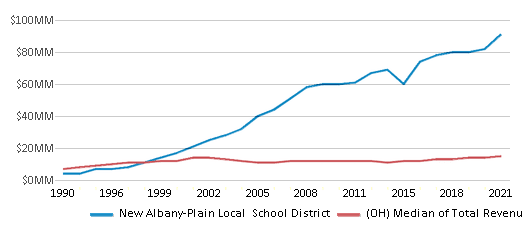
Spending
$133 MM
$28,792 MM
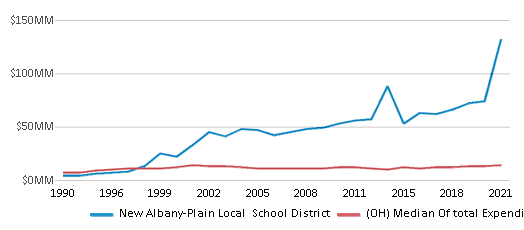
Revenue / Student
$18,040
$17,287

Spending / Student
$26,157
$17,235
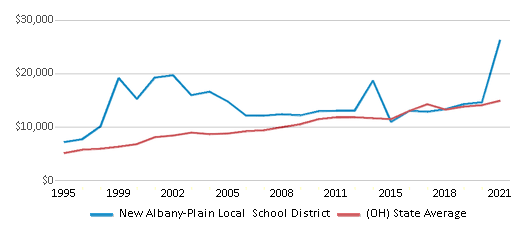
Best New Albany-Plain Local School District Public Preschools (2025)
School
(Math and Reading Proficiency)
(Math and Reading Proficiency)
Location
Grades
Students
Rank: n/an/a
5101 Swickard Woods Blvd
New Albany, OH 43054
(614) 413-8700
New Albany, OH 43054
(614) 413-8700
Grades: PK-K
| 522 students
Recent Articles

Year-Round Or Traditional Schedule?
Which is more appropriate for your child? A year-round attendance schedule or traditional schedule? We look at the pros and cons.

Why You Should Encourage Your Child to Join a Sports Team
Participating in team sports has a great many benefits for children, there is no doubt. In this article you will learn what those benefits are.

White Students are Now the Minority in U.S. Public Schools
Increasing birth rates among immigrant families from Asia and Central and South America, combined with lower birth rates among white families, means that for the first time in history, public school students in the United States are majority-minority. This shift in demographics poses difficulties for schools as they work to accommodate children of varying language abilities and socio-economic backgrounds.





